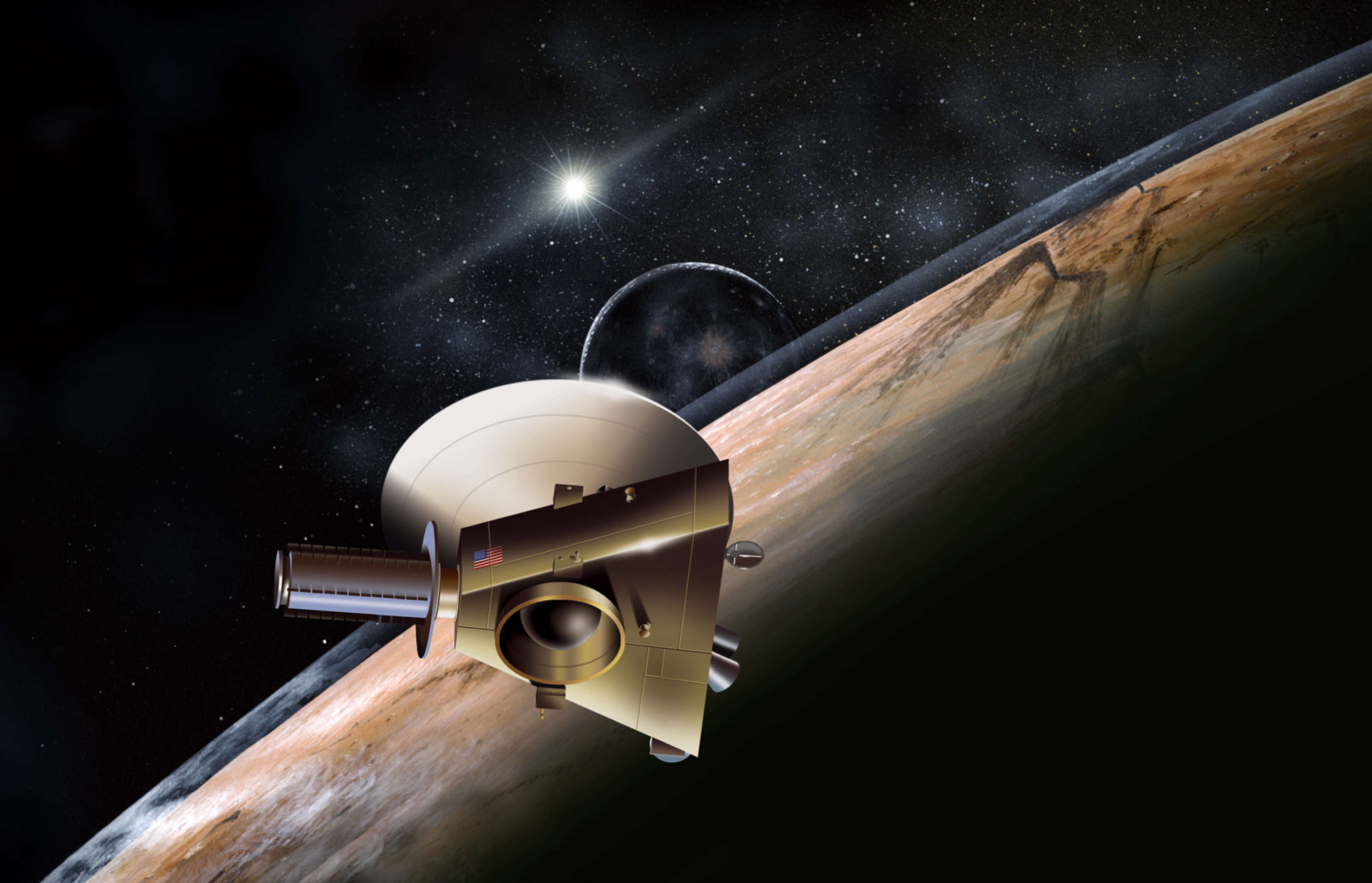Pluto, humanity is getting ready to change your image. The New Horizons spacecraft is awake once more after emerging from hibernation as planned yesterday (Dec. 6). And after a decade of sailing through space, there will be a historic first encounter with the dwarf planet in July.
The story may not end there, either. Mission managers are working hard to make the case that since New Horizons is way "out there" anyway, it would be a great idea to put the spacecraft past another object later in the mission. That hope rides heavily on the success of the Pluto encounter July 14.
"Technically, this was routine, since the wake-up was a procedure that we'd done many times before," said Glen Fountain, New Horizons project manager at the Johns Hopkins Applied Physics Laboratory,
in a statement
. "Symbolically, however, this is a big deal. It means the start of our pre-encounter operations."
[caption id="attachment_117078" align="alignnone" width="580"]
The New Horizons spacecraft takes off on Jan. 19, 2006 from the Kennedy Space Center for its planned close encounter with Pluto. Credit: NIKON/Scott Andrews/NASA[/caption]
It's been a neat few years for the mighty machine, even before getting to the main event. New Horizons launched from the Kennedy Space Center in 2006 and made a close pass by
Jupiter and its moons in 2007
, doing some science en route -- including catching a huge explosion from Io, a volcanic moon.
Since then, the spacecraft has dutifully been sending back pictures from across the Solar System, including a picture of
Neptune's moon Triton
, and several
of Pluto
-- the first time a spacecraft will venture that far. In between the science work and checking out systems, New Horizons spent two-thirds of the journey sleeping to conserve energy for the big show.
Up next for the spacecraft will be several weeks of checkouts and also putting together the commands to make sure New Horizons is successfully guided past Pluto and its moons (a process that got complicated over the years as
more moons were discovered
.) After that, if the spacecraft holds out and the budget is approved, managers want to swing it past a Kuiper Belt Object.
[caption id="attachment_115355" align="alignnone" width="580"]
Two potential targets for the New Horizons mission emerge in these Hubble Space Telescope multiple-exposure images. Both are about four billion miles (6.4 billion kilometers) away. NASA, ESA, SwRI, JHU/APL, and the New Horizons KBO Search Team[/caption]
The Kuiper Belt is a collection of icy bodies past Neptune's orbit. These small worlds are believed to be building blocks of the Solar System, showing off a time billions of years ago when there were no planets or moons -- just chunks of rocks and ice, which slowly collided and coalesced over millions of years to form the familiar landscape we see today.
New Horizons team members plan to ask for more money for this mission in late 2016, as they gather information via the Hubble Space Telescope and other sources to make their case. (They already have
some targets in mind
.) But the focus will definitely be on Pluto in the coming months.
Next year, by the way, will see another planned close encounter with a dwarf planet when
NASA's Dawn spacecraft gets to Ceres in the spring
.
 Universe Today
Universe Today
